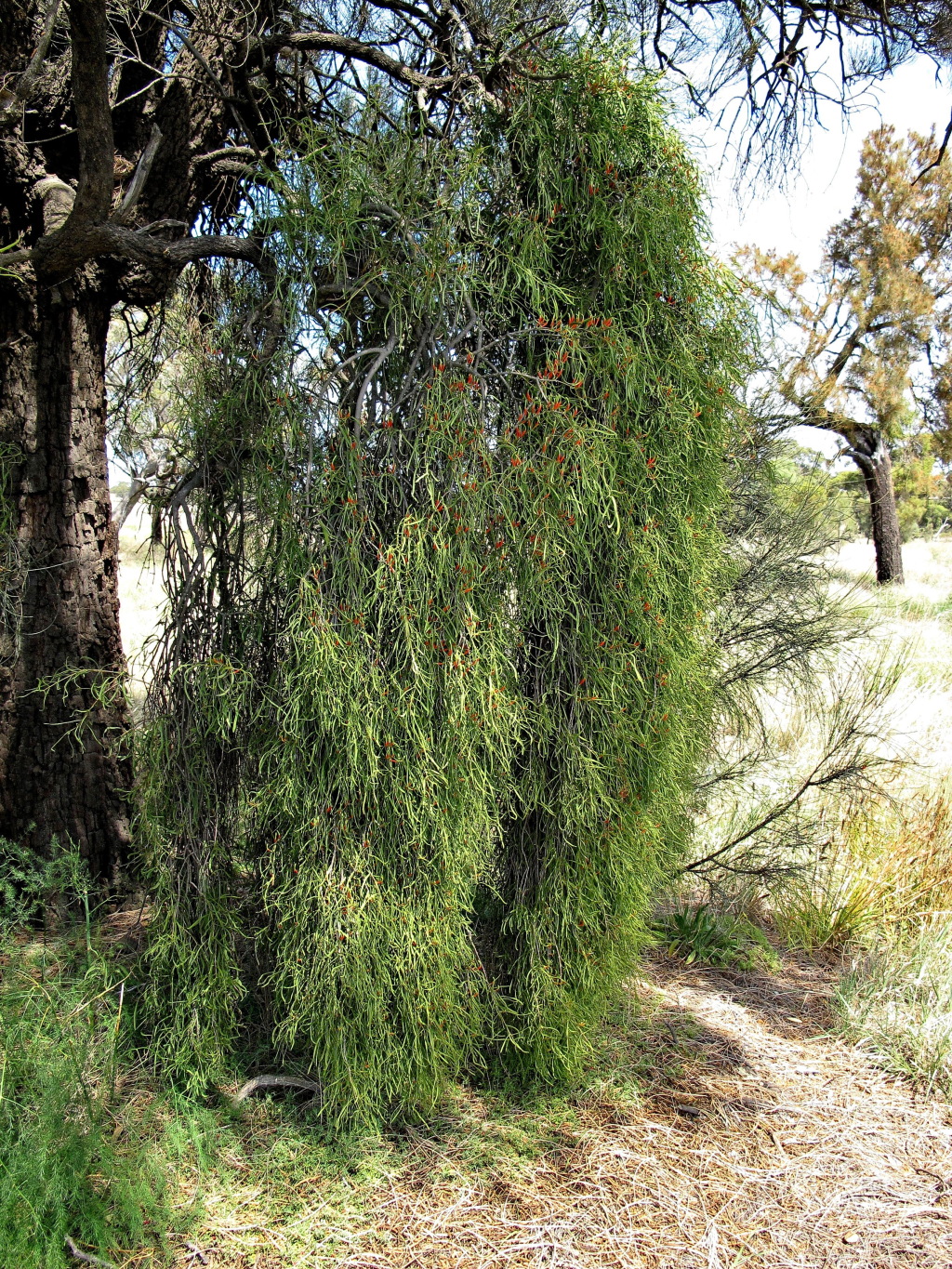Lysiana exocarpi
(Behr) Tiegh. Harlequin MistletoeSpreading to pendulous shrubs. Leaves flat or somewhat compressed, linear to narrow-oblong or narrow-elliptic, mostly 3–15 cm long, 1–10 mm wide, base tapering, apex rounded, leathery, green, sessile to shortly petiolate; venation obscure. Inflorescence usually 2-flowered; peduncle 0.5–2 mm long; pedicels 2–5 mm long; bracts c. 1.5 mm long, obtuse. Calyx entire or weakly toothed, limb to c. 0.7 mm long; corolla 25–50 mm long, usually red, rarely yellow, sometimes tipped with green or black; anthers 4–6 mm long, not septate. Fruit ellipsoidal to ovoid, 6–10 mm long, red or black. Flowers mostly Dec.–Apr.
LoM, MuM, Wim, VVP, VRiv, MSB, RobP, OtP, Gold, CVU, GGr, DunT, NIS. Also WA, NT, SA, Qld, NSW. Widespread in western Victoria where found on a wide range of hosts but not on species of Eucalyptus.
This species displays a great deal of variation in leaf width, apparently depending to some extent on habitat and host plant. Subspecies tenuis (Blakely) Barlow, from northern New South Wales and southern Queensland, reputedly differs from the type variety in having narrower (1–3 mm), linear leaves (Barlow 1963). However, this variant seems to represent only the lower end of a continuum. Most Victorian populations have leaves 2–5 mm wide, sometimes with leaves less than 3 mm wide as well as some greater than 3 mm wide on the same plant. Given the evidence available, the recognition of this subspecies is not considered useful or practical.
Jeanes, J.A. (1999). Loranthaceae. In: Walsh, N.G.; Entwisle, T.J., Flora of Victoria Vol. 4, Cornaceae to Asteraceae, pp. 38–45. Inkata Press, Melbourne.
 Spinning
Spinning



